The first new Class 700 train from Siemens has arrived through the Channel Tunnel for delivery to Thameslink. It has taken years of planning and preparation by the train builder, by the train operator and by Network Rail. A new depot has been built at Three Bridges (RAIL 774), tracks have been altered, and staff have been trained.
Yes, it is later than once planned. And it is not without its critics. But it will transform a rail service that has repeatedly languished towards the bottom of National Passenger Survey league tables. For hundreds of thousands of travellers, these trains will serve on the daily commute for the rest of their working lives. It is the last visible link in a project we once knew as Thameslink 2000, named after its intended completion date.
Could the brand new train start carrying passengers as soon as it arrives?
“Not quite. But we are just about ready,” says Network Rail’s Chris Curtis. He describes his job as pouring oil on the troubled waters of Thameslink, making sure that the project does not cause problems for the operational railway while trying not to impose restrictions on the construction team.
“The train sits at Three Bridges depot for a week or so while various people check that the Germans have done all the right things. Then it starts testing, progressively between Bedford and Brighton. The intention is to have it in passenger service early next year - January or February. But if testing goes well they might try to bring that forward.”
The initial delivery is just one train. The second will not follow until October, but gradually the rate will increase to one new train a week. In Germany, the first 20 trains are effectively completed, all of them in the longest 12-car configuration.
Curtis explains: “From our perspective there are three stages of acceptance. First the network has to be able to accept the trains without power, so they can be delivered from the Channel Tunnel to Three Bridges depot. So we’ve had to make sure the route there (and later to Hornsey depot) is gauge cleared for the new trains. Some of that has involved changing the alignment of curves in and around tunnels.
“We don’t just do that on the delivery or test routes, of course. We do that on potential diversionary routes as well. Bedford to Brighton sounds very straightforward, and north of St Pancras it is. But south of Tulse Hill there are various routes the train could be asked to go - we’ve had to clear via Crystal Palace, Streatham and Selhurst, and from Haywards Heath via Lewes to Brighton.
“We compare our database with the profile of the train - we call it the kinematic envelope, the shape of the train when it is moving. In a small number of cases it meant we had to do some work - realigning track, lopping the end off a platform coping stone, or taking a brick out of a bridge parapet.”
Upgrades to the power supply have also been needed, with the new Siemens trains longer than many of the services they will replace.
“Next we go through the process of running the train under its own power,” explains Curtis.
“That requires a lot of work. It needs electrical compatibility - we have to make sure it will not interfere with the signalling or with existing power networks. And the driver has to see all the signals.
“This is a fixed-formation 12-car train. At some point it will break down. Then we will have to push it out of the way with another train. And that will potentially be another 12-car train doing the pushing. So we are talking about a 24-car train. That’s 500 metres long. There really are not many places on the route where we can deal with a 24-car train.”
Curtis adds that the third stage is to run trains with passengers onboard.
“For that we’ve had a fair bit of work to do at stations. The stations in the core - London Bridge to St Pancras - will have level access to two of the coaches for mobility-impaired passengers. For wheelchairs, there will be humps on the platforms where two of the coaches will stop.
“Today a wheelchair passenger can board at any convenient place on the train. With the Class 700s, they will go on two particular coaches. That means we have to change the stopping positions at some stations - moving the 12-car and eight-car stop boards in many cases, and then making sure the driver can still see the signals clearly.
“And at the couple of hundred stations that are not in the core, we’ve had to deploy new ramps to get wheelchair passengers on and off. And, of course, they have to be located next to the two specific carriages - because if people get on the wrong carriage outside London, they would then be unable to get off in the core.”
For nearly a year, Thameslink has been recruiting and training staff ready for the new trains. Initially they will work from Siemens’ state-of-the-art Three Bridges depot.
“We call the depot operators our ‘train doctors’,” explains Dyan Crowther, chief operating officer of the Govia Thameslink Railway franchise, which from July 26 formally incorporated the Southern and Gatwick Express brands alongside Thameslink and Great Northern.
“We have new ways of working, new operating standards,” she says. “This is a very intelligent train, very technical. So there is a lot of testing and commissioning.
“We have more than 100 drivers in training. We had the biggest recruitment campaign ever for drivers. We didn’t have enough spare to carry out all the testing, and we have doubled the number of driver trainers, too.
“We needed enough drivers on the existing trains, so we could take them all out in turn for the conversion course. The test drivers have already been out to Germany. They are now ready for the arrival here.
“Initially we will look after this train like a newborn baby. We will have numerous staff on board during the testing, which will all be in the dead of night. We have to do high-speed pantograph tests, ride and stability tests, and door tests. And we have to make sure all the passenger information systems work. We have to achieve a set amount of fault-free running before each train gets its certification.”
NR’s Curtis adds: “These will be the first new trains on the main line ready for ETCS signalling, all fitted and commissioned.
“We are starting that testing in the core using an old Class 313 at night. When it works on the old train we will test the new trains with it - probably September. And we have to test the Automatic Train Operation. We won’t be using it at first, but when we go to 24 trains per hour in 2018, it will rely on ATO being in place.”
The route has had many new trains in recent years. As First Capital Connect, the Thameslink service was steadily upgraded. But the incoming trains were all known quantities, derivatives of the Bombardier-built Electrostar. The Siemens order is a brand new fleet incorporating brand new technology. And it is very different in scale - the largest train order ever placed in the UK.
“Then we will have the new Gatwick Express trains in 2016,” adds Curtis. “They are more Class 387s with different interiors, so they will be less challenging. But there are power implications, because they are replacing the old Class 442s, so we still need further assessments on the power draw to make sure there will be enough volts in the third rail.”
Crowther notes that a fleet of ‘387s’ has already been introduced for Thameslink.
“They replaced all the Bedford to Brighton Class 319s, which was done without a murmur. It went well,” she says.
“But the ‘700’ is a new class of train, so there is a lot more rigour with this. That means looking at the whole thing as a system - us, Siemens and Network Rail all working together. We have to be supportive and collaborative.”
Crowther oversees what has just become Britain’s biggest passenger franchise. Below her are five passenger service directors covering Thameslink, Great Northern, Gatwick Express, Southern Metro, and Southern Mainline & Coast. She says each is “like a mini managing director”.
The challenge is considerable. Never before has Britain introduced a completely new fleet on this scale or with this complexity, while mixing it with Automatic Train Operation and ETCS signalling.
“That’s why I joined the business,” enthuses Crowther. “This is a transformational process.”
The new trains can carry up to 1,700 people. The existing trains carry 1,200 passengers in 12-car formation, although many are currently eight-car. As well as enabling a huge increase in numbers, from 2018 the fleet will serve new routes such as Cambridge to Gatwick. There will also be a link with Crossrail.
The cascade of new trains for old will require detailed management. It is simply not possible to take delivery of a whole new fleet and put it into service in one go - there is nowhere to stable that number of additional, longer trains. There are new sidings at Three Bridges, but not enough to manage the changeover alone.
“It’s not quite a case of one new train in, one old one out. But we have a finite amount of space to keep them. It is a very complex process,” says Crowther.
Over the next three years there will be a gradual building up of pressure before the key timetable change in December 2018. That’s the deadline for all the Siemens trains to be delivered, tested and in service. It’s when Network Rail will have to handle 24 trains an hour through the core, using Automatic Train Operation.
“It’s only three and a half years away, so planning started long ago,” says Curtis.
“However, in its franchise bid, GTR proposed the whole timetable framework would come in this December instead. Not at the full 24 trains per hour, but the Brighton Main Line and Midland Main Line will already have the structure in place. So we have to be Class 700-ready. As the trains are delivered they can then just slot in, in place of existing trains.”
The timetabling has been very complex - for example, south London lacks grade-separated junctions. And for more than a century passengers have been offered the options of a City terminus or a West End terminus, which means large numbers of conflicting paths across flat junctions.
Curtis explains: “We can make small improvements: a minute here and there in the timetable can make a big difference in the way trains are ordered approaching Victoria, and that evens out the passenger loads between trains.
“The Brighton Main Line is very congested. Growth is still extraordinary. Even in the middle of the disruptive London Bridge work, passenger numbers there are increasing. The new Thameslink trains are longer, and they will take a lot more people. Down to Brighton it will be 12-cars on all services in the peak. And there will be more trains, especially off-peak.”
In less than a decade, London Bridge has added an extra 20 million passengers a year.
“But I live on the Thameslink route,” says Curtis. “I remember what happened last time we got longer trains. I know that within three months of starting 12-car trains they will all be full to bursting.
“We will have a lot more people to manage - we will attract many more passengers to this railway.”
- This feature was published in RAIL 781 (August 19 - September 1 2015)

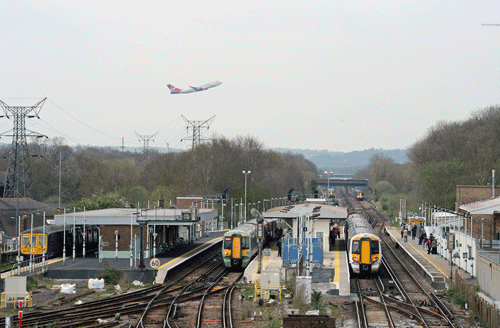
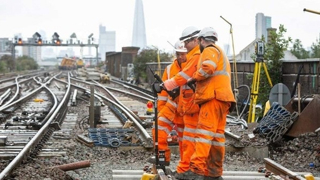
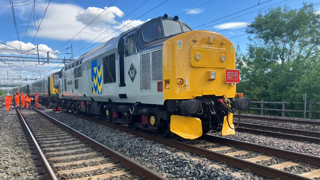

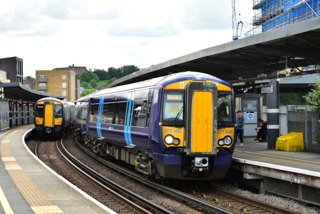
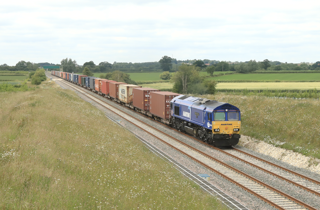










Login to comment
Comments
No comments have been made yet.